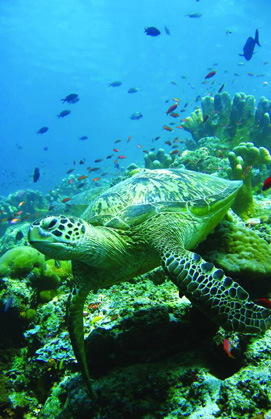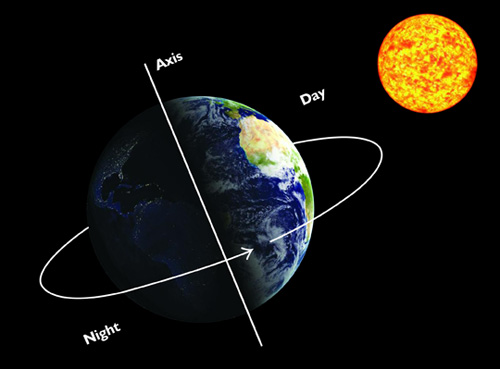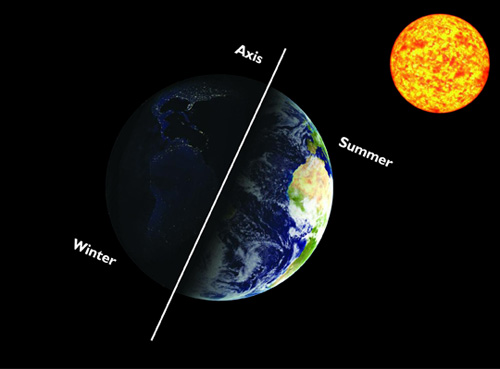THE EARTH'S PLACE IN SPACE
The Earth is unique in the solar system because it is the only planet that we know where life is supported. Animals and plants are abundant. You can see them everywhere! Even the oceans are filled with life.
 A sea turtle swimming in the ocean.
A sea turtle swimming in the ocean.
Our planet supports life because of its position in the solar system. At an average distance of about 93 million miles (150 million km), we are the third planet from the Sun. Our temperatures and our atmosphere create perfect conditions for life forms to thrive.
The Earth travels around the Sun in an elliptical, or oval, orbit. We are never closer than 91.5 million miles (147.3 million km) from the Sun, or farther than 94.5 million miles (152 million km). This helps keep the Earth from getting too hot or too cold.
The Earth revolves, or goes completely around, the Sun once every 365.25 days. That is how we measure years—one trip around the Sun equals one Earth year.

The Earth itself rotates, or spins, in space as it travels around the Sun. It takes about 24 hours, or one day, for the Earth to rotate completely on its axis. Because the Earth rotates, each part of the Earth spins toward and away from the light of the Sun. This is what creates day and night.

The Earth tilts on its axis about 23.5 degrees. As it revolves around the Sun in the course of a year, this tilt causes some parts of the Earth to tilt toward the Sun and other parts to tilt away from the Sun. This creates the seasons.
When the northern hemisphere, or half, of the Earth is tilted toward the Sun, the southern hemisphere is tilted away. When it is summer in the northern hemisphere, it is winter in the southern hemisphere, and vice versa.
